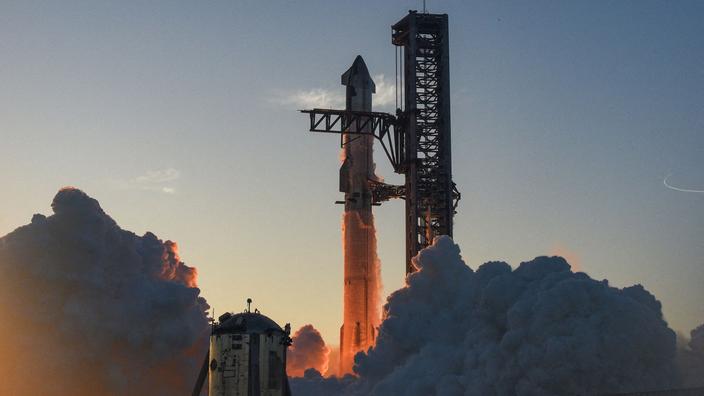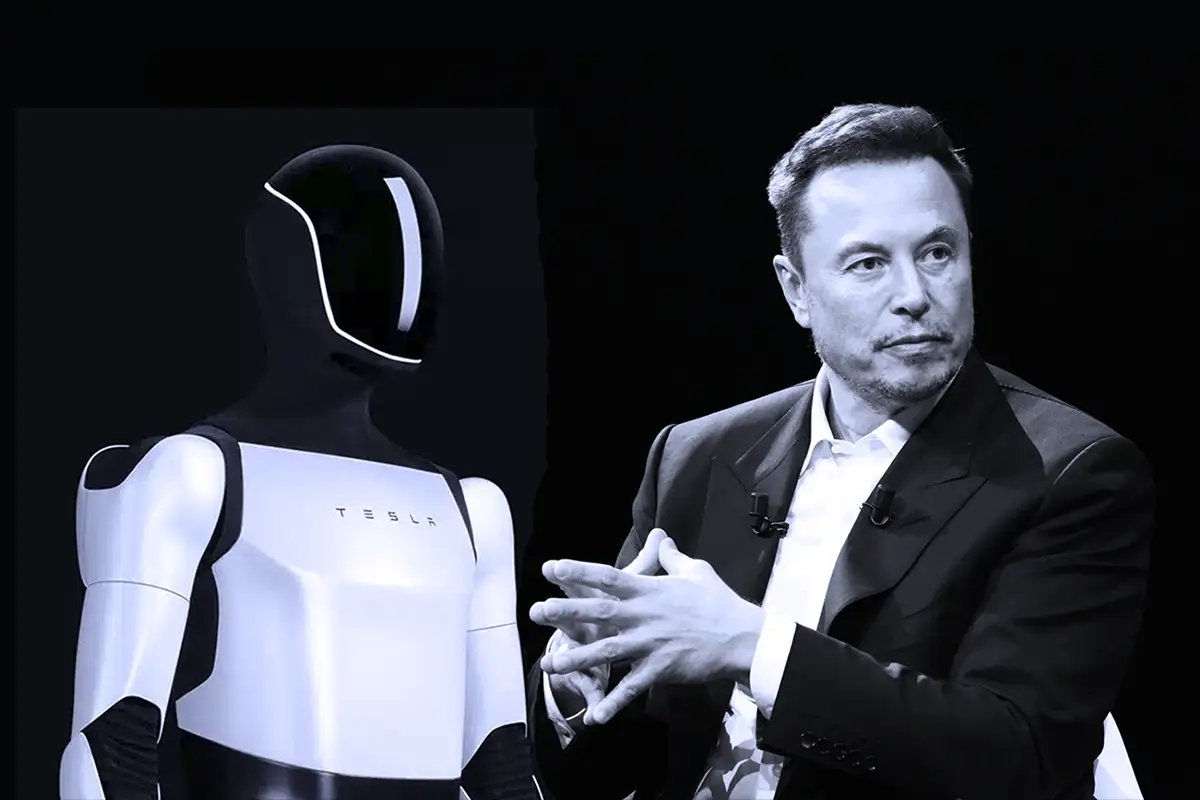In a groundbreaking step toward interplanetary exploration, Elon Musk has officially confirmed SpaceX’s ambitious plan to send its Starship spacecraft to Mars by the end of 2026, with Tesla’s revolutionary humanoid robot, Optimus, onboard. This mission is poised to become a pivotal moment in Musk’s vision of human settlement on the Red Planet, setting the stage for future manned missions by 2031.
Elon Musk, the CEO of both SpaceX and Tesla, has always been unafraid to set audacious goals. His recent announcement, made during a press conference, laid out a detailed timeline for SpaceX’s Starship mission to Mars. This mission, which is set to launch in 2026, will primarily serve as a demonstration for future crewed missions, with Optimus playing a critical role in setting up the initial infrastructure on Mars.
The Starship, standing at an impressive 120 meters tall, is the largest and most powerful rocket ever developed. Built with stainless steel and designed for full reusability, the Starship is capable of carrying up to 100 tons of cargo and transporting approximately 100 passengers on each trip. This spacecraft will be a key player in Musk’s vision of making humanity a multi-planetary species.
One of the most exciting aspects of this mission is the integration of Tesla’s humanoid robot, Optimus. Launched in 2022, Optimus has captured the public’s attention for its remarkable ability to perform a wide range of tasks, from simple chores to complex activities. Standing at 1.72 meters tall and weighing around 57 kilograms, Optimus is designed with precision and agility, capable of navigating and operating in complex environments. Its deployment on Mars marks a historic moment not only for robotics but also for interplanetary exploration.
Optimus is an essential component of SpaceX’s Mars mission. Musk has emphasized that the robot will play a vital role in establishing the initial infrastructure on Mars, conducting preliminary scientific research, and performing tasks that are too dangerous or complex for human astronauts. By performing these crucial functions, Optimus will help lay the groundwork for future human missions to Mars, significantly reducing risks for astronauts and increasing the mission’s overall feasibility.

According to Musk, the primary goal of this mission is to establish a sustainable human presence on Mars. “Optimus will be crucial in setting up the infrastructure, conducting initial research, and handling dangerous tasks that human astronauts cannot,” Musk stated. This mission is expected to be a major step toward Musk’s vision of a self-sustaining colony on Mars, with humans living and working on the Red Planet by the early 2030s.
Starship is not just a transport vehicle; it represents the future of space travel. Its full reusability and immense capacity make it ideal for the long-term goals of space exploration. SpaceX has already completed several high-altitude test flights of Starship prototypes, continually improving the technology for future missions. Musk explained, “The main advantage of Starship is its reusability. We want to significantly reduce the cost of space exploration, making frequent trips to Mars economically viable.”
The 2026 mission will serve as a precursor to manned missions that could begin as early as 2031. Following the landing of Starship on Mars, Optimus will immediately begin critical tasks such as establishing living quarters, analyzing soil samples, and setting up solar-powered generators. These efforts will be vital in ensuring that future human missions are able to survive and thrive on Mars. Astronauts who arrive on Mars in 2031 will rely heavily on the infrastructure built by Optimus, which will improve safety and make their missions more practical and sustainable.
While the mission is undoubtedly ambitious, it also faces significant challenges. The journey to Mars is long, with astronauts exposed to harmful radiation and harsh environmental conditions on the Martian surface. Success in the 2026 mission, which will be entirely unmanned, is critical to addressing these challenges. SpaceX is working closely with scientists and engineers to develop innovative solutions for life support systems, radiation shielding, and autonomous robotic systems.
Dr. Amelia Roberts, an aerospace engineer specializing in Mars colonization at NASA, commented, “Using humanoid robots like Optimus to set up the infrastructure will greatly reduce risks for future crewed missions. This strategy allows humans to focus on exploration, research, and long-term sustainability rather than just survival.”

SpaceX’s announcement has generated excitement within both the scientific community and the public. Many experts believe that this mission will spark renewed interest and investment in space exploration worldwide. Dr. Henry Liu, a robotics expert at MIT, remarked, “The combination of SpaceX and Tesla through the integration of robotics and space travel could accelerate technological advances. Optimus’ successful deployment on Mars could revolutionize robotics and open the door for robots in many challenging applications on Earth.”
Musk’s vision for Mars goes beyond a single landing. He envisions a thriving colony on Mars, with thousands of residents living on the Red Planet, supported by a network of autonomous robots like Optimus. This vision extends far beyond the first human landing, focusing on the long-term sustainability of human life on Mars.
“Optimus could evolve into the cornerstone for Mars colonization,” Musk stated passionately. “It would handle critical tasks, from farming to construction and maintenance of infrastructure. Mars is just the beginning. Ultimately, the future of humanity depends on our ability to become a multi-planetary species. Starship and Optimus are the first steps in this journey.”
Looking ahead, both SpaceX and Tesla will continue to push forward with the development and testing of new technologies. As 2026 draws closer, the world will be watching eagerly to see if Musk’s grand vision can become a reality. SpaceX’s Starship mission to Mars, equipped with Tesla’s Optimus robot, will be a defining moment in humanity’s quest for the stars.
“We are confident, but we also understand the challenges ahead,” Musk concluded. “This is not just a mission for SpaceX or Tesla—it is a mission for all of humanity. The lessons we learn will shape our future among the stars.”
As space exploration continues to evolve at a rapid pace, SpaceX’s bold mission to Mars stands as a testament to humanity’s relentless curiosity and determination to push beyond our earthly boundaries. As we count down to 2026 and beyond, the world watches with anticipation, eager to see how these audacious dreams will unfold.
News
“From International Sex Symbol to Private Heartbreak—The Tragic Final Act of Sophia Loren’s Legendary Life Is Leaving Fans in Tears”
Sophia Loren at 90: The Tragic Reality Behind a Hollywood Legend’s Final Years Sophia Loren, one of the last true…
“Internet MELTS Over Jenna Bush Hager’s Gorgeous Husband and Adorable Kids—Viewers Say ‘This Is America’s First Family 2.0!’”
Try Not to Gasp When You See Jenna Bush Hager’s Husband & Kids Jenna Bush Hager may be a familiar…
“Ainsley Earhardt Sparks Outrage with Daring Fashion Choice Just Days After Confirming Engagement to Sean Hannity—Critics Say She’s ‘Too Flashy for Fox!’”
Ainsley Earhardt’s Fashion Sparks Controversy Amid Engagement to Sean Hannity Fox News host Ainsley Earhardt, the newly engaged fiancée of Sean Hannity,…
“Fox News Power Couple EXPOSED: Ainsley and Hannity’s Hidden Engagement Finally Revealed—Here’s How They’re Making It Work!”
Ainsley Earhardt Opens Up About Long-Distance Engagement with Sean Hannity – “We Make It Work” Fox News host Ainsley Earhardt and Sean Hannity shocked…
“From Anchor to Aftershock: Ainsley Earhardt’s World Turned Upside Down by Husband’s Alleged Affair—Fox News Star Faces Ultimate Personal and Public Humiliation!”
Fox News Star Ainsley Earhardt SPLITS from Husband Amid Shocking Infidelity Scandal with Her Close Friend! Fox News host Ainsley Earhardt has…
“Harris Faulkner’s Savage Takedown of Whoopi and Sunny Goes Viral After Explosive Ratings Victory!”
Harris Faulkner Slams The View Hosts After Her Shocking Ratings Win—What She Really Thinks of Whoopi Goldberg and Sunny Hostin…
End of content
No more pages to load













